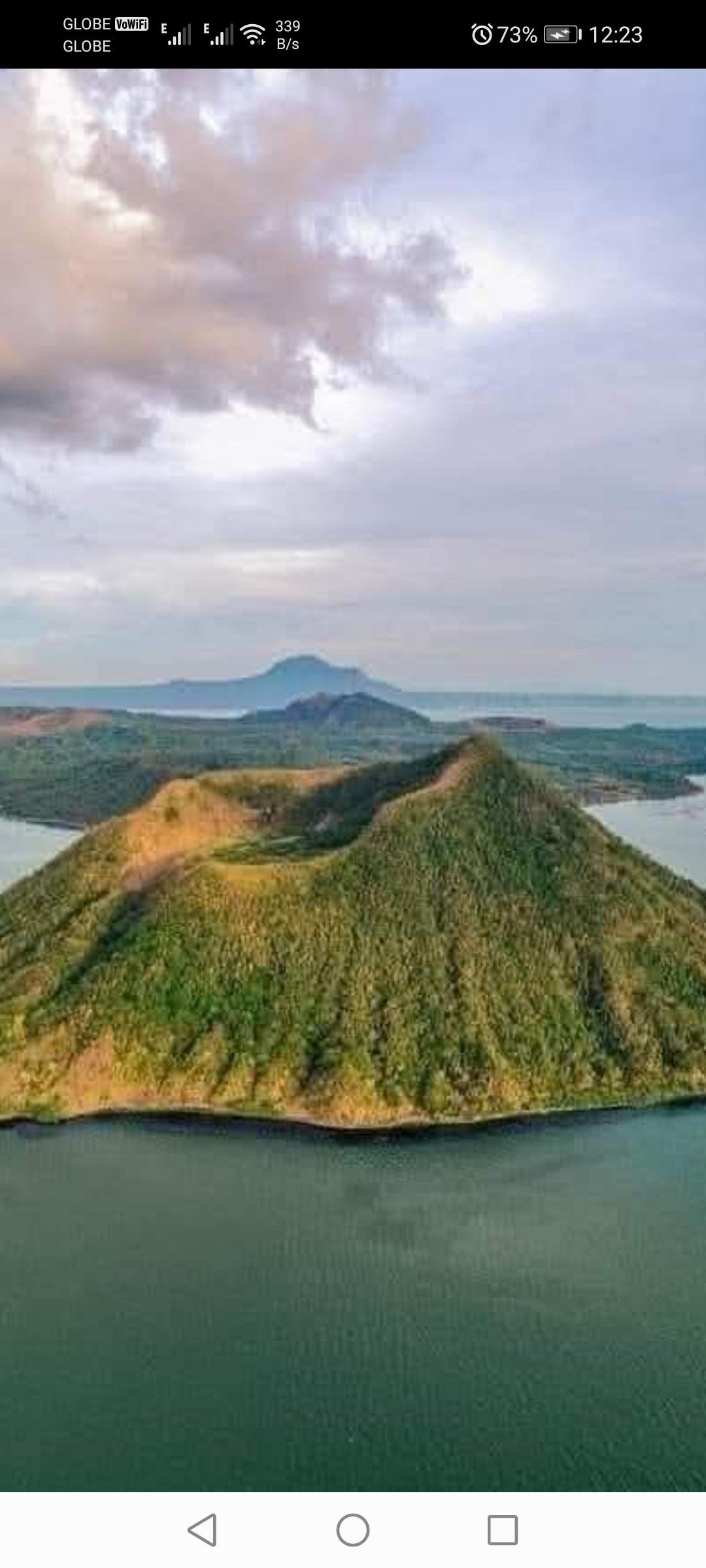Taal Lake is a SALT WATER
Located @ BATANGAS
Alam Mona ba to?
Maka wow ka talaga
Taal Lake was Salt Water prior to 1754.
The huge 1754 eruption that lasted for 6 months from May to December 1754 changed the salinity of the water from salt to freshwater.
The Pansipit River narrowed down where once upon a time Galleons can enter from Balayan Bay to Taal Lake.
It gave way and formed a new land blocking the mouth of the Pansipit River and that land later on became Lemery,Batangas in 1861.
New islands sprouted up from underneath like Napayong Island located in Tanauan
This gave way to new forms of species like the Maliputo and Tawilis.
Maliputo was actually a Trevally or Talakitok but since it turned freshwater, then it became the Maliputo
Tawilis was actually a sardine that turned into a freswater sardine trapped inside the lake when the salinty changed.
There are fossils of old coral reefs in Taal Lake proving that once upon a time it was saltwater. The last SHARK sighting in Taal was in 1935.
----------------------------------------------
-Additional facts-
1. Lake within a caldera (Taal Volcano)
2. Volcano within a lake (Taal Volcano Island)
3. Lake within a volcano within a lake!
This rare formation is due to:
1. Volcanic activity creating the caldera
2. Erosion and sedimentation forming the lake
3. Ongoing volcanic activity shaping the island
Taal Lake's characteristics:
1. Located in Batangas, Philippines
2. Approximately 25 km x 30 km (15.5 mi x 18.6 mi)
3. Maximum depth: 172 meters (564 ft)
4. Contains Vulcan Point, the world's smallest active volcano
Taal Lake's unique features make it:
1. A popular tourist destination
2. An important ecological and geological site
3. A source of freshwater and fisheries
#highlightsシ゚ #everyone #trendingpost #followers #cctophotonotmine #philipineshistory #followersシ゚ #PHCEHistory #followerseveryonehighlightseveryone #fypシ゚viralシfypシ゚
Located @ BATANGAS
Alam Mona ba to?
Maka wow ka talaga
Taal Lake was Salt Water prior to 1754.
The huge 1754 eruption that lasted for 6 months from May to December 1754 changed the salinity of the water from salt to freshwater.
The Pansipit River narrowed down where once upon a time Galleons can enter from Balayan Bay to Taal Lake.
It gave way and formed a new land blocking the mouth of the Pansipit River and that land later on became Lemery,Batangas in 1861.
New islands sprouted up from underneath like Napayong Island located in Tanauan
This gave way to new forms of species like the Maliputo and Tawilis.
Maliputo was actually a Trevally or Talakitok but since it turned freshwater, then it became the Maliputo
Tawilis was actually a sardine that turned into a freswater sardine trapped inside the lake when the salinty changed.
There are fossils of old coral reefs in Taal Lake proving that once upon a time it was saltwater. The last SHARK sighting in Taal was in 1935.
----------------------------------------------
-Additional facts-
1. Lake within a caldera (Taal Volcano)
2. Volcano within a lake (Taal Volcano Island)
3. Lake within a volcano within a lake!
This rare formation is due to:
1. Volcanic activity creating the caldera
2. Erosion and sedimentation forming the lake
3. Ongoing volcanic activity shaping the island
Taal Lake's characteristics:
1. Located in Batangas, Philippines
2. Approximately 25 km x 30 km (15.5 mi x 18.6 mi)
3. Maximum depth: 172 meters (564 ft)
4. Contains Vulcan Point, the world's smallest active volcano
Taal Lake's unique features make it:
1. A popular tourist destination
2. An important ecological and geological site
3. A source of freshwater and fisheries
#highlightsシ゚ #everyone #trendingpost #followers #cctophotonotmine #philipineshistory #followersシ゚ #PHCEHistory #followerseveryonehighlightseveryone #fypシ゚viralシfypシ゚
😲Taal Lake is a SALT WATER😲
Located @ BATANGAS
Alam Mona ba to?
Maka wow ka talaga😲
Taal Lake was Salt Water prior to 1754.
The huge 1754 eruption that lasted for 6 months from May to December 1754 changed the salinity of the water from salt to freshwater.
The Pansipit River narrowed down where once upon a time Galleons can enter from Balayan Bay to Taal Lake.
It gave way and formed a new land blocking the mouth of the Pansipit River and that land later on became Lemery,Batangas in 1861.
New islands sprouted up from underneath like Napayong Island located in Tanauan
This gave way to new forms of species like the Maliputo and Tawilis.
Maliputo was actually a Trevally or Talakitok but since it turned freshwater, then it became the Maliputo
Tawilis was actually a sardine that turned into a freswater sardine trapped inside the lake when the salinty changed.
There are fossils of old coral reefs in Taal Lake proving that once upon a time it was saltwater. The last SHARK sighting in Taal was in 1935.
----------------------------------------------
-Additional facts-
1. Lake within a caldera (Taal Volcano)
2. Volcano within a lake (Taal Volcano Island)
3. Lake within a volcano within a lake!
This rare formation is due to:
1. Volcanic activity creating the caldera
2. Erosion and sedimentation forming the lake
3. Ongoing volcanic activity shaping the island
Taal Lake's characteristics:
1. Located in Batangas, Philippines
2. Approximately 25 km x 30 km (15.5 mi x 18.6 mi)
3. Maximum depth: 172 meters (564 ft)
4. Contains Vulcan Point, the world's smallest active volcano
Taal Lake's unique features make it:
1. A popular tourist destination
2. An important ecological and geological site
3. A source of freshwater and fisheries
#highlightsシ゚ #everyone #trendingpost #followers #cctophotonotmine #philipineshistory #followersシ゚ #PHCEHistory #followerseveryonehighlightseveryone #fypシ゚viralシfypシ゚

·115 Visualizações
·0 Anterior





